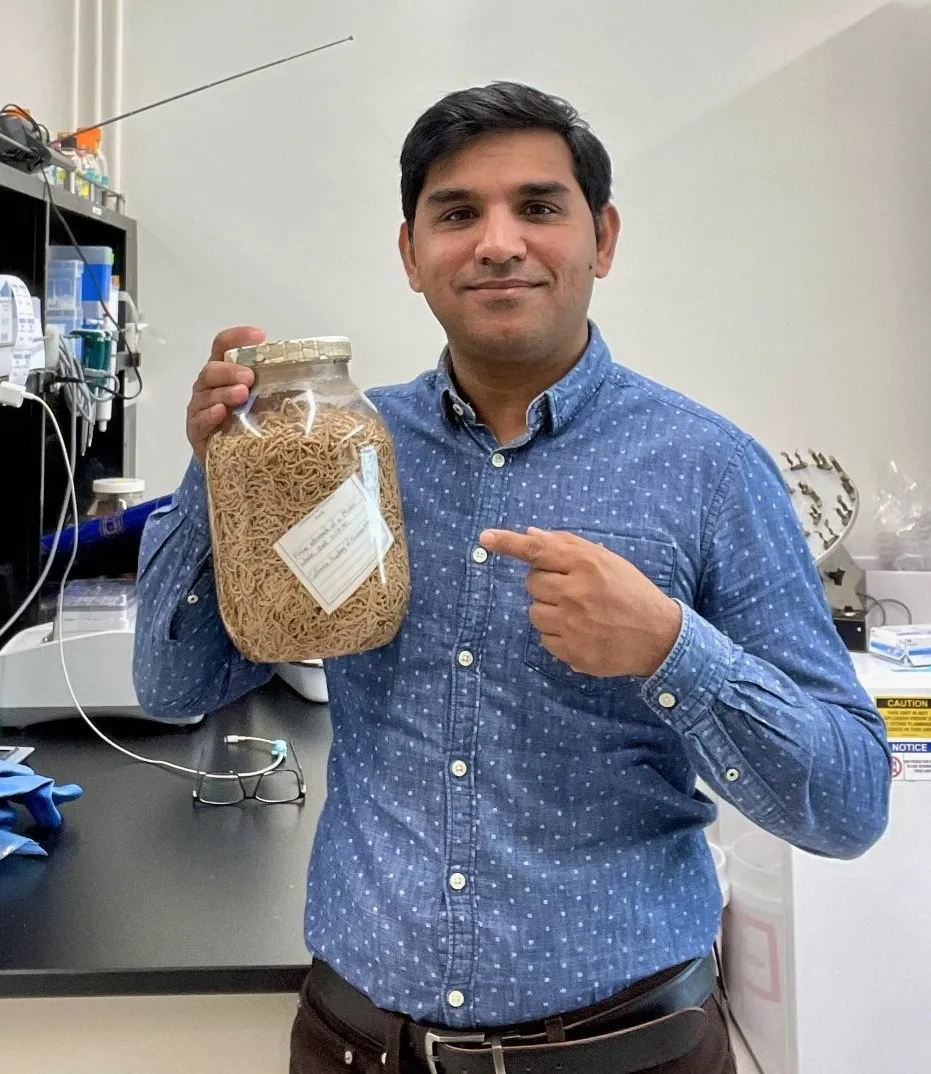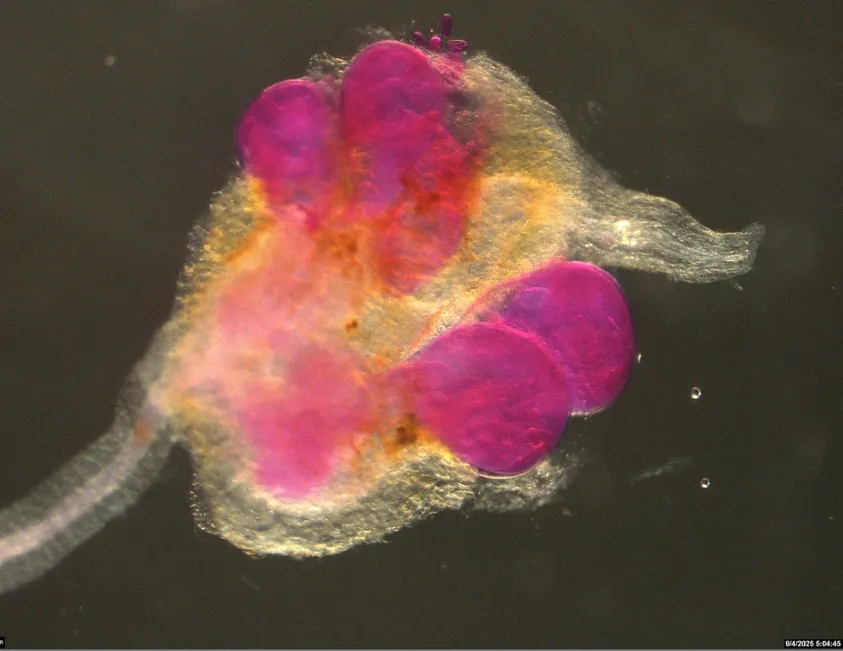
Plant-parasitic nematodes rarely draw national headlines, but this newly published research should.
First, what's a plant-parasitic nematode?
As UC Davis nematologist Shahid Siddique, an associate professor with the UC Davis Department of Entomology and Nematology explains: "Plant-parasitic nematodes are microscopic worms that extract water and nutrients from such host plants as wheat, soybeans, sugar beets and bananas. They're one of the most destructive agricultural pest. The agricultural losses due to plant-parasitic nematodes reach an estimated $80 billion. The high impact of plant parasitic nematodes in economically important crops is not only due to the direct damage but also because of the role of some species as virus vectors.”
Now to the newly published research hailed as key research::
UC Davis nematologists, including Valerie Williamson, professor emerita in the Department of Plant Pathology, and Siddique have long wondered how the plant-parasitic nematode, the Northern root-knot nematode, is able to infect such a wide range of organisms, from monocots and dicots to annual crops and woody plants.
Now a 15-member research team of international nematologists and biotechnologists, led by UC Davis nematologists, have gained insight into how the DNA of this nematode species, Meloidogyne hapla, facilitates their success.
The discovery, hailed by the team as groundbreaking, “is the most complete and contiguous genome assembly for a plant-parasitic nematode to date,” agreed Williamson and Siddique, co-authors of a newly published paper, “High-Resolution Genome Assembly and Linkage Mapping in Meloidogyne hapla Reveal Non-Canonical Telomere Repeats and Recombination Hotspots Associated with Effector Proteins,” in the open-access medical journal, PLOS Pathogens
The peer-reviewed research is online at https://tinyurl.com/44zx2eh2.
“Interestingly, we discovered that Meloidogyne hapla uses an unusual DNA repeat at the ends of its chromosomes instead of typical telomeres, suggesting it may have an alternative way to protect its chromosomes end,” Siddique said.

Overall, our study integrates high-resolution structural genomics, genetic mapping, and functional inference to uncover links between genome architecture, recombination landscapes, and host–parasite interactions,” said first-author Pallavi Shakya, a doctoral candidate in the Siddique lab who received her master’s degree in plant biotechnology from Wageningen University, The Netherlands.
Other co-authors include UC Davis doctoral candidate Alison Blundell and UC Davis postdoctoral researcher Dadong Dai, both of the Siddique lab, and scientists from The Netherlands, France, Indonesia, Australia, and Croatia.
“Plant parasitic nematodes cause billions of dollars of damage annually to plant crops globally,” said Williamson, a Fellow of the Society of Nematologists. “Root knot nematodes (RKN) are the most damaging species group in large part because they are able to infect diverse crops including both monocots and dicots, annual crops and woody plants.”

“Over twenty years ago, my group and others decided to focus on a single species as a model to serve as a resource,” Williamson related. “We chose the species Meloidogyne hapla due to its relatively simple DNA genome, its genetic tractability, and the observation that isolates of the nematode differed in plants that they could infect. While considerable progress was made in analyzing the DNA, attempts to completely understand the genome structure were hindered by the tiny size of the organism and limitations in technology.”
However, in recent years, dramatic improvements in biotechnology and bioinformatics developed. “Our international team of nematologists and biotechnologists worked together to produce a complete assembly of the genome that represents the DNA sequence of full-length chromosomes,” she said, pointing out that “As far as we are aware, this is the most complete genome for a plant-parasitic nematode.”
“The genome structure has several novel features: Chromosome ends do not resemble those of most other animals or plants; the chromosome structure differs between isolates of this nematode with breaks, rejoining and recombination between chromosomes of different isolates,” Williamson said. “This genome flexibility may provide a clue as to how root-knot nematodes are able to change the spectrum of hosts that they can infect. It will also provide a resource for studying the genome of other important RKN species and allow identification of nematode genes that contribute to successful parasitism. This information should inform best strategies for RKN control as well as development of plants with increased resistance.”
The Northern root-knot nematode causes significant economic damage to many crops by causing root galls, stunting, reduced yield, and disfigurement, which makes infected produce like carrots unmarketable. The damage affects a wide range of plants, including vegetables, fruit trees, and wine grapes in certain regions. Infections are most severe in young plants, which can lead to complete crop destruction, while established plants may sustain significant yield reduction.
Cover image: Nematodes infecting bean roots. (Image by Pallavi Shakya)

